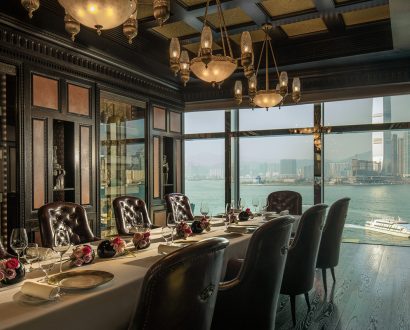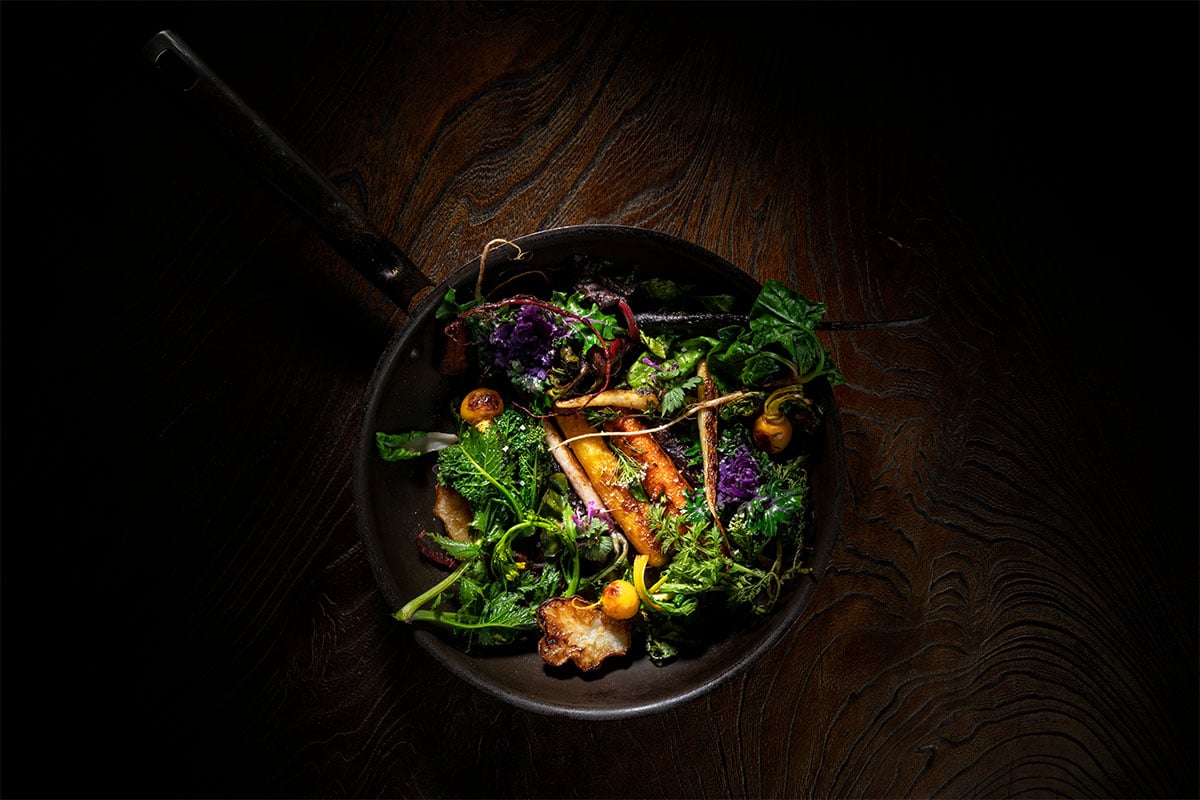A look at Asia’s 10 best restaurants

As the hospitality industry continues to bounce back from the restrictions of the last two years, Asia’s best chefs and restaurant owners look forward to sharing their hyper-seasonal creations with the global food community once again.
Since launching 10 years ago, Asia’s 50 Best Restaurants – sponsored by S.Pellegrino and Acqua Panna – recently unveiled its prestigious list for 2022. With Japan in the lead, closely followed by Thailand and Singapore, boasting the most entries, this year’s winner was Tokyo’s Den.
In previous years Den, conceived by chef Zaiyu Hasegawa, ranked consistently high as Japan’s voted best restaurant every year since 2018. Renowned for its playfulness, Hasegawa’s dishes are a perfect marriage of contemporary meets traditional Japanese cuisine, of which the Dentucky Fried Chicken is a prime example.
Chefs, restaurateurs, industry VIPs and the media were brought together across three different events in Bangkok, Macau and Tokyo to celebrate the top 50 chefs in Asia.
"In its 10th year, Asia’s 50 Best Restaurants proudly continues the tradition of rewarding culinary excellence and guiding diners to the most unique gastronomic experiences across the continent," explains William Drew, Director of Content for Asia’s 50 Best Restaurants.
Get ready as we take you behind the scenes of the top culinary destinations in Asia and examine the philosophies and experiences underpinning the success of each chef.
Asia’s top 10 restaurants
Den, Tokyo

While growing up, Owner and Chef at Den, Zaiyu Hasegawa became fascinated by traditional Japanese cuisine. As a geisha his mum would bring home Bento for him from the ryotei (fine dining restaurant) where she worked.
While Hasegawa’s career began in one of these exclusive restaurants, Den’s philosophy is more of an elevated expression of Japanese home cooking. While the menu coincides with the changing seasons, the restaurant is renowned for its chicken wings, signature salad, snow crab tofu glazed with mizore sauce and donabe-gohan – rice heated in an earthen pot and paired with wagyu beef or seafood.
"Thanks to the support of producers, the vegetables we use are grown without pesticides or chemical fertilisers. Our specialty salad expresses our connection to farmers and is a fun way for diners to see what came out of the garden," Hasegawa says.
In 2019 Den was also recognised for its heart-warming hospitality, earning the Art of Hospitality Award at The World’s 50 Best Restaurants.
Sorn, Bangkok
Sorn’s Head Chef Supaksorn Jongsiri became deeply inspired by southern Thai cuisine from his grandmother. His menu today is not only bursting with flavour and encompasses the cultural diversity of the South, but each dish is served at the right temperature – introducing a unique element to Thai cuisine.
If you’re lucky enough to secure a reservation at Sorn you can expect a one-of-a-kind service you’d be hard-pressed to find elsewhere. Staff are specially trained to delight guests with stories of Jongsiri’s vision and memories that inform each dish.
Combining the most highly-prized parts of a crab and coated in crab roe paste, Kan Chu Piang – gems on crab stick – is arguably a winning dish whose flavour is enhanced by piquant orange chilli sauce.
Florilège, Tokyo
If you’re looking for an experience that goes beyond the everyday Florilège is likely to pique your interest. With innovative French cuisine openly prepared for all eyes to see, Chef Hiroyasu Kawate provides a rare encounter for guests who desire a more transparent sensory experience.
With ingredients sourced locally and seasonally, Kawate’s dishes are imbued with a distinct Japanese quality. The restaurant specialises in preparing meals with sophisticated techniques that are served in Japanese style plates and bowls.
Le Du, Bangkok
A seemingly French name, Le Du in fact derived from the Thai word for ‘season’. Thitid Tassanakajohn, a master chef and restaurant empire builder co-founded the restaurant around the concept of regional Thai cooking with a French twist.
Trained in the US, Tassanakajohn’s menu showcases the finest local and seasonal ingredients, which are combined with modern cooking techniques. Le Du’s wines are sourced from around the globe and are carefully selected by Tassanakajohn who’s also a certified sommelier.
While Le Du’s menu is constantly changing, there is one dish Khao kluk kapi – river prawn paired with brown rice risotto and shrimp paste – that is synonymous with the restaurant and what it stands for.
The Chairman, Hong Kong
The Chairman was the first restaurant in Hong Kong to earn the prestigious title of The Best Restaurant in Asia, and for good reason. While the menu is contemporary, tradition and seasonal fresh ingredients play an important role in continuing the legacy of Cantonese cuisine.
Rare delicacies from southern China, including 20-year-old pickled lemon, sugar-roasted chrysanthemum and mini water crabs are procured from the most remote villages in China.
A favourite is undoubtedly the steamed flowery crab served with Chinese wine, clam juice and flat rice noodles.
La Chime, Osaka
La Cime, meaning summit in French, sets the bar high when it comes to delivering classic cuisine expressed through modern cooking techniques. Its star chef Yusuke Takada began his culinary career in Lyon and later worked in Osaka and Paris.
Our childhood memories can be one of the greatest sources of inspiration and for Takada the small island in southern Japan in which he grew up informs his recipes today.
With a flair for rare flavour combinations, Takada’s angler fish liver is served with persimmon and green onion, and for vegetarians the sea cucumber paired with turnip and starflower is a must.
Sühring, Bangkok
Nestled in a serene setting in the heart of Bangkok, the Sühring brothers Thomas and Mathias established a restaurant that is more akin to a house with several dining spaces to choose from.
With a wealth of international experience under their belt, the duo embarked on a fresh re-interpretation of traditional German gastronomy prepared to the standard of haute cuisine. With an array of fresh produce and seafood on their doorstep, the pair include crayfish, blue lobster and butternut squash on the menu.
Guests can expect a relaxed yet sophisticated encounter in a 1970s villa complete with a lush garden and open kitchen to observe the chefs bringing their creations to life.
Odette, Singapore
This year Odette, located in Singapore’s National Gallery, once again ranked high in Asia’s 50 Best Restaurants list, as it has done in the past few years. As the recipient of the highly coveted Gin Mare Art of Hospitality Award, this year Odette has proven itself as the ultimate destination to enjoy modern French cuisine in an artistic setting infused with genuine hospitality.
"I owe everything that I am to my family, especially my grandmother, Odette. She showed me how the most remarkable dishes can come from the purest ingredients and taught me the importance of adding that ‘little something’ to create dishes that excite the palate and fill the heart," explains Julien Royer, Chef and Owner of Odette.
Boutique producers around the world supply the finest ingredients to bring signature dishes – Normandy brown crab and pepper-crusted pigeon – to life with attention to seasonality and terroir.
Neighborhood, Hong Kong
A hidden laneway teeming with markets, local bars and antique shops is an unusual setting in which to establish a gourmet restaurant. Although fully booked, Chef and Owner David Lai doesn’t rely on a polished website or instagram account to entice people into tasting his simple French cooking.
Lai worked in exclusive high-end restaurants in both Hong Kong and San Francisco before adopting the ‘slow food’ philosophy of Alice Waters that he came across while completing his studies in California.
At Neighborhood lamb sourced from the Pyrenees, local seafood and wild game can be found on the specials menu, which always reflect the current season.
Nusara, Bangkok
Chef Thitid Tassanakajohn, of Le Du, pays homage to his grandmother Nusara with a menu that re-visits family recipes.
From the 12-course tasting menu the spicy squid salad and wok-fried wagyu beef topped with basil lead into the heartier crab curry served in a betel leaf.
While the second floor seats 10 in a room that has an intimate atmosphere from another era, the ground floor is home to a chic bar serving beverages that have Tassanakajohn’s stamp of approval, as a certified sommelier.